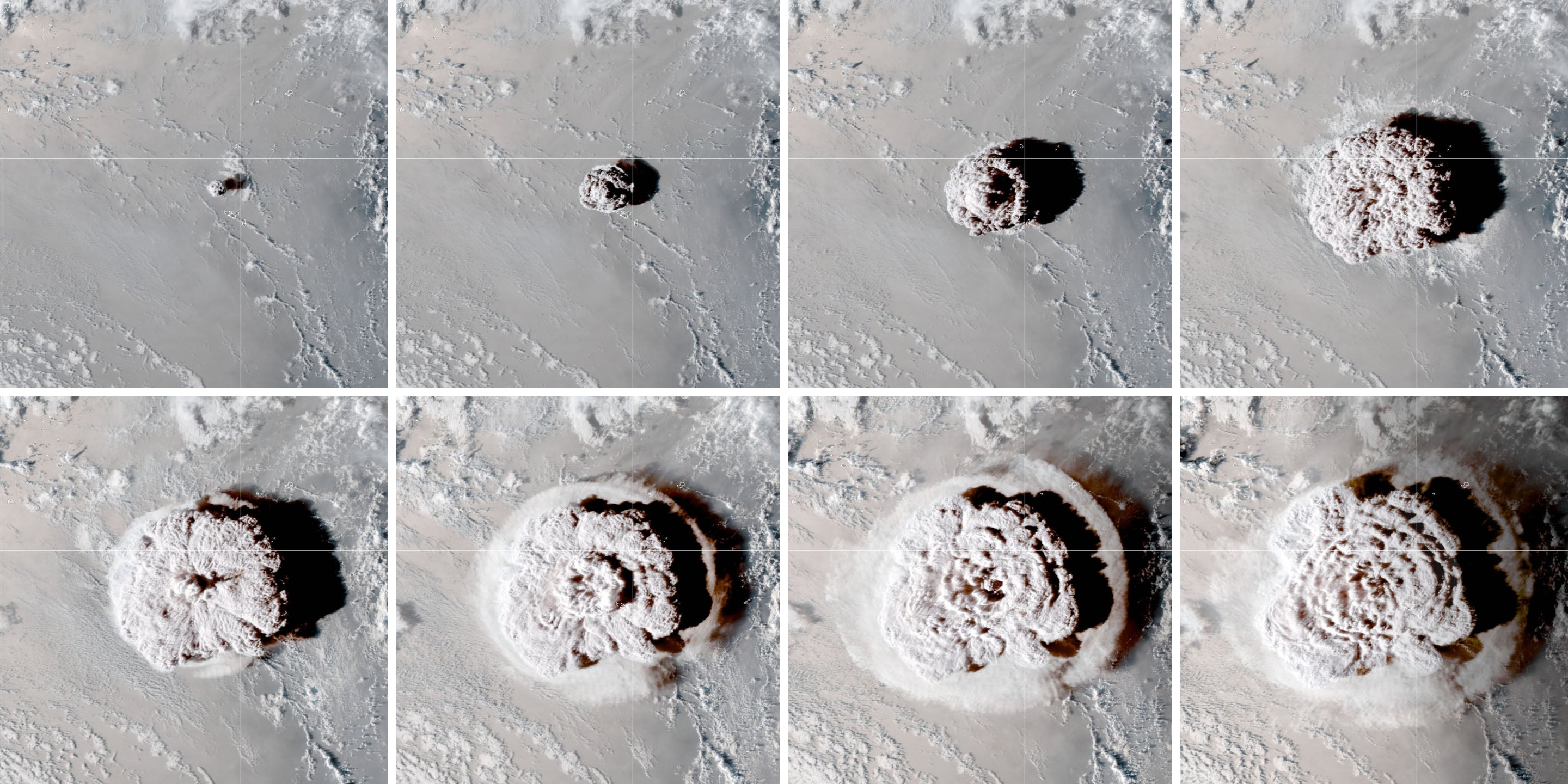Tonga volcano eruption produced largest ash cloud ever recorded, Nasa says
The 15 January eruption generated the largest volcanic ash plume on record, towering into reaches of the upper atmosphere

The ash plume from the 15 January eruption of the underwater Hunga Tonga-Hunga Ha’apai volcano in Tonga was the largest observed in the modern satellite era, according to Nasa scientists, rising nearly 58 kilometers into the atmosphere — two and a half times as high as any thunderstorm ever recorded.
The largest ash plume observed before the Tonga eruption, the 1991 Mount Pinatubo eruption, threw ash 35 kilometers into the atmosphere above the Philippines.
Observations by US and Japanese Earth-imaging satellites and subsequent analysis by Nasa atmospheric scientists show the plume from the Tonga eruptions grew 1.5 times as tall as the Pinatubo plume. Ash from the Tonga eruption would eventually spread out to cover an area of 157,000 square kilometers, an area larger than the US state of Georgia.
“The intensity of this event far exceeds that of any storm cloud I have ever studied,” said Nasa Langley Research Center atmospheric scientist Kristopher Bedka, in a statement on the space agency’s Earth Observatory website. “We are fortunate that it was viewed so well by our latest generation of geostationary satellites and we can use this data in innovative ways to document its evolution.”
Ash from the Tonga eruption reached into the mesosphere, the layer of Earth’s atmosphere beginning around 50 kilometers altitude, where the stratosphere ends, and extending to around 95 kilometers, where the thermosphere begins. While the International Space Station flies in the thermosphere at roughly 410 kilometers, and airliners soar in the stratosphere at nine to 12 kilometers altitude, few craft but sounding rockets and high altitude balloons have explored the mesosphere.
Scientists used techniques usually utilized to study large storms to analyze the Tonga eruption, noting some similarities. Volcanic heat and ocean moisture combined to power a storm-like ash cloud more potent than could ever form from regular convection currents alone, and in addition to spreading ash over a wide area, the cloud also produced a tremendous amount of lightning.
Beyond generating local weather and harming contaminating water supplies in Tonga, remnants of the ash plume could stay aloft in the upper atmosphere for a year or more and impact global climate, although Nasa scientists note that the eruptions contained low levels of sulfur dioxide, which can cause atmospheric cooling.
On the islands of the Tongan archipelago, the eruption affected more than 100,000 people, and while recovery efforts have been underway since immediately following the eruption and subsequent tsunami, UN officials recently said Tonga may need $90 million or more to rebuild.
Subscribe to Independent Premium to bookmark this article
Want to bookmark your favourite articles and stories to read or reference later? Start your Independent Premium subscription today.

Join our commenting forum
Join thought-provoking conversations, follow other Independent readers and see their replies